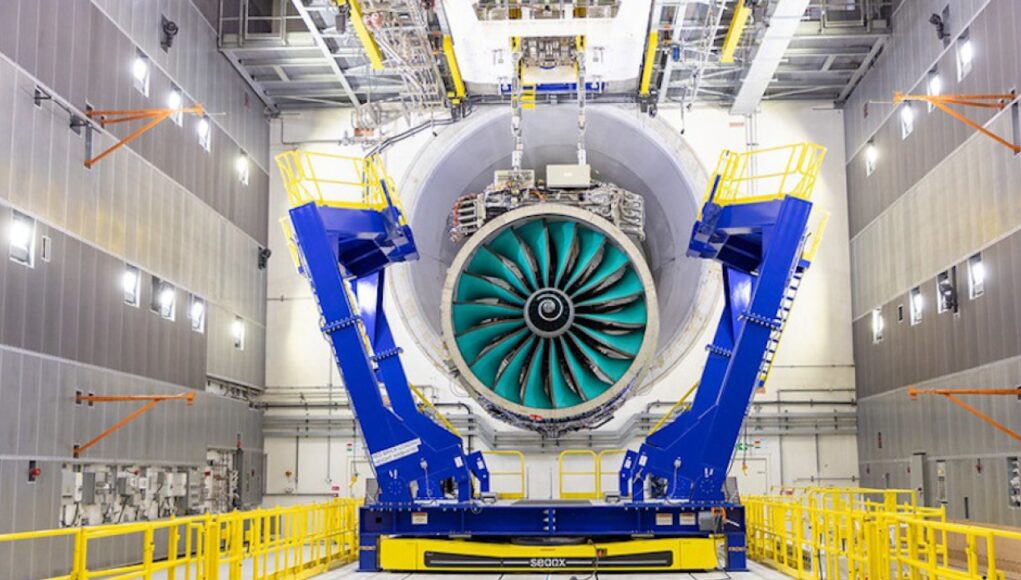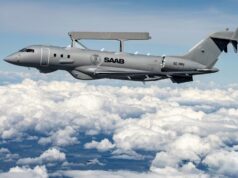Rolls-Royce has successfully completed the initial testing of its ground-breaking UltraFan technology demonstrator at the company’s facility in Derby, UK.
The tests were notably executed with 100% Sustainable Aviation Fuel (SAF), marking a considerable stride towards the future of sustainable air travel.
This momentous occasion is the first of its kind in over half a century for Rolls-Royce. “This is a historic moment for Rolls-Royce – it’s the first time in 54 years the aero-engine manufacturer has tested a brand-new engine architecture and is proof of what can be achieved when industry and Governments work together,” the company stated in its press release.
The success of these preliminary trials signals the viable potential of the suite of technologies embedded in the UltraFan demonstrator. The revolutionary engine has demonstrated a 10% efficiency improvement over the Trent XWB, which is presently the world’s most efficient large aero engine in service.
This new technology is not only focused on future aero engines. The company highlighted there are “options to transfer technologies from the UltraFan development programme to current Trent engines, providing our customers with even greater availability, reliability and efficiency.”
Looking further ahead, the scalable technology in the UltraFan, ranging from approximately 25,000-110,000lb thrust, could potentially power future narrowbody and widebody aircraft, anticipated to emerge in the 2030s.
CEO of Rolls-Royce plc, Tufan Erginbilgic, enthusiastically celebrated the achievement, stating, “The UltraFan demonstrator is a game changer“.
For more details on the groundbreaking UltraFan technology and the significant strides Rolls-Royce is making towards sustainable air travel, you can read more by clicking here.














Great achievement but I think one of the key components, the gearbox was designed and built in Germany.
And the micro processors were made in Taiwan, what’s your point?
Same as yours to educate these large projects are generally international.
I don’t believe the article reported this as a British project but rather a Rolls Royce project. If you want to see reports falsely promoting nationalism then check the recent Chinese reporting of the C919 airliner.
Much of the Pearl design originated in its German design centre too but in all honesty it’s great that British and German technology is combining for RR to make sure it stays competing against the US giants and one major result is the re engining contract for the B-52. Hopefully Japanese technology can feed into the future too for the benefit of both Countries the more widespread avenues of technology research and progress the less likely a competitor will steal a March not to mention the financial advantages by spreading the load. Cross fertilisation will benefit all concerned I think.
It was tested in a German facility but the design was at least partially carried out here in Derby.
C-17s re-engined with Ultrafan would be interesting.
Or Canberras x3 scale for maritime
Amazing what can still be achieved. And just shows this country is still at the forefront of aero engine design and manufacturing. 🇬🇧
We are in a wide range of state of the art technologies in all honesty, F1 is the great example of that even if the headline names like Mercedes and Red Bull sadly tend to disguise the fact. But you have Arm and some of, indeed probably the most efficient electric motors around that we see going into our Electric buses at least in London and we have two of the leading Fusion Reactor programs here. So many great technological innovations originate here, so few are recognised by the masses sadly and the great gap in our engineering below that is greatly the reason for that I fear, as it’s foreign companies that so often benefit or are identified with the technology in the end.
Totally agree mate. We do so much good stuff and really specialist engineering. But people just want to moan and do us down. The fact we can build nuclear submarines which are the most complex machines ever made is a testament to the UK’s manufacturing capability. And F1 is a very good example. Even a team like Ferrari has a large number of British employees.
‘But people just want to moan and do us down.’
Our national bird (chosen by the public last century and now forgot) was the Robin. It ought to have been the grouse.
https://www.bto.org/understanding-birds/birdfacts/red-grouse
That’s Scotland.
You are fighting an uphill battle, as this thread already demonstrates in part, to convince anyone Blighty does great things in leading technologies and research – much of it most secret. I have been laughed down making this point. Many of the innovations that are leading to better life outcomes for millions across the world began here on this island. However, I am pleased in a way we don’t have to tell everyone. It’s our British way.
Trouble is, the UK looks down on engineers & scientists ie. . Sir Frank Whittle, Barnes Wallace,Alan Turin, R.E.Bishop etc then they destroyed the British Aircraft industry so thats why RR went to Germany and Singapore. Plus RR made the disastrous mistake of pulling out of the single isle commercial aircraft market.Also the government of the day pulled out of Airbus- not a great enviroment for budding engineers
👍
An amazing achievement that only one other country can match at the moment. The great success of Airbus and Rolls Royce vindicates previous policy to focus on high end aircraft components rather than entire aircraft production. Just look at the mess that Boeing is in right now.
Much the same goes for ships, the UK is not a large manufacturer of ships but it still produces a significant amount of marine propulsion systems and sensors.
Despite the naysayers the UK still has a significant manufacturing base considering the size of the service industry it also supports.
Well said Jim.
You are correct Jim but good luck in getting that message across.
Read this a while back on New Atlas. The interesting point, or at least the one that stuck is the return finally to carbon fibre fan blades notably however with titanium leading edges which considerably lightens the weight overall per blade.
I remember reading a while back that even a 1 to 2% saving on fuel efficiency represents many, many millions in savings for airlines so 10% is an enormous improvement, not to mention its overall fuel type flexibility. If my memory is correct it’s also removed a fair few components and some moving parts either turbine or compressor related elements operate more efficiently at a slower rotational speed so should only add to potential reliability.
Hydrogen is the future for sustainable air travel. Just get rid of the doped linen and its perfectly safe 😉
https://en.wikipedia.org/wiki/R101
Actually, there is a proposal to add a small amount of Hydrogen during the production of jet fuel. Halves the amount of soot, which is a warming element to the atmosphere. Cuts other pollution too. 5% more expensive though.
A lot of smart minds working hard on this global warming thing. Not sure carbon capture is the way to go….just seems like a wheeze to carry on doing what we are already doing.
All very well and a great achievement BUT when ever will it be ready to put on an Aircraft, its already to late for the 777x? Question now is WHAT Aircraft?